Elon Musk just admitted the obvious. Well one of the obvious things about why electric cars don’t sell unless they’re subsidized:
They are too expensive. Or rather, not “affordable enough” – which is another way of saying the same thing
Elon’s own words, finally.
But he doesn’t ask the follow-up question that’s begged but almost never answered: Why are they so so expensive? 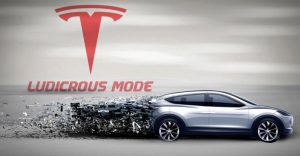
The answer, interestingly, isn’t because they’re electric cars – at least not necessarily. It is because of the kinds of electric cars being produced – especially those being made by Elon. They are purposely designed to be expensive.
High-performance cars tend to be that, whether they’re propelled by a high-performance engine or a high-performance motor.
Elon’s least expensive car is the Model 3 sedan, which has a base price just shy of $38,000. It costs this much because it is designed to be capable of getting to 60 MPH more quickly than most sports cars, which it does in just over 5 seconds.
This is what Elon is trying to sell. Electrification being incidental.
It’s all very impressive. But it’s not inexpensive. Speed still costs money, however achieved. Not that there is anything wrong with paying more to go fast. But it is bizarre for Elon to sweat the cost of cars he designed to be expensive because he designed them to go fast.
Porsche also designs cars to go fast, of course – but affordability isn’t a major consideration for people specifically shopping for high-performance. But it’s a major consideration for most people – for whom acceptable performance is sufficient.
Because that’s all they can afford.
Such performance is available in non-electric cars like the Toyota Camry, a car that Toyota sells a lot of without wheedling subsidies out of the government to make them “affordable” in the Muskian sense – as Elon does because he must.
The market for cars with a starting price of almost $40,000 – whether powered by motors and batteries or gas and pistons – is inherently limited because the average American only makes about $40,000. He can’t afford the speed $40k buys – and so he buys the Camry.
It doesn’t get to 60 in just over five seconds.
But it starts at just over $24k – a difference of almost $15,000 vs. the least expensive Tesla available.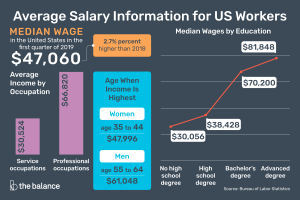
This is why it is necessary to pay people to buy Teslas – via tax credits amounting to several thousand dollars off the sticker price.
The funds recovered from tax-payers.
But it isn’t necessary to pay people to buy electric cars – in theory – provided they’re designed to be economical cars, with adequate speed rather than ludicrous speed.
And provided they stop trying to do the thing EVs cannot economically do right now and maybe not ever given the limitations of current electric car technology.
That thing is drive fast – and far – at the same time.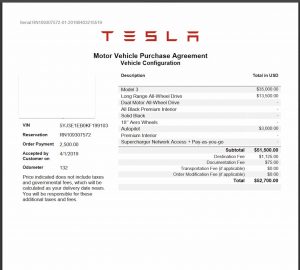
This also takes more money than necessary.
The money required to design and build a high-capacity battery pack capable of absorbing and retaining the necessary charge to keep an EV rolling at 70 for hours at a time – something any IC economy car can do very affordably.
Which they can do because IC cars are most efficient at highway speeds, whereas it’s the opposite with EVs, which are most efficient the slower they go.
It’s cheap to go far in an IC car. $15k will take you 400 miles at 70.
It is very expensive to do the same thing in an EV, which begs the question about designing EVs to do be able to, if you intend for people to be able to buy them.
The way to go – if you wanted to design an affordable electric car that practically anyone could buy and which lots of people would probably want to buy – would be to forget about quickness and distance and focus on what the electric car is better at than the IC car.
Or could be, if people like Elon Musk got out of the business of distorting the market for them. 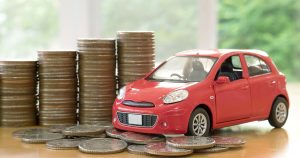
The technology does exist to make an electric city car that could be manufactured and sold for less than current IC economy cars, without taxpayers made to pay for a portion of each purchase. Such an EV wouldn’t be capable of getting to 60 in 5 seconds – or traveling much farther than 100 miles on a charge. But if these superfluous and unreasonable goalposts were ditched – which they’d have to be, if EVs weren’t being subsidized by the taxpayer – the focus would fix on . . . affordability.
Instead of 1,000 pounds of high-performance battery pack – as in the Tesla 3 – a battery a third the capacity and half or less the weight.
And cost.
Everything about the car would be designed to make it more affordable rather than higher-performance. In order to make it appealing to people who cannot afford to spend almost $40,000 or even $30,000 on a new car of any kind – which is most Americans.
Which is the real problem with electric cars.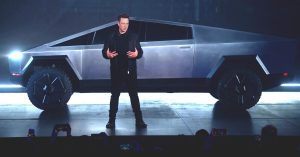
It is also problem of understanding. A guy like Elon Musk is rich beyond the ken of most Americans – but it works in the other direction, too. Elon Musk – a billionaire – may be so divorced from the economic realities most Americans have to deal with that he cannot fathom what affordability means to them.
Of course, he would fathom if it if he had to build car that could be sold to them. Toyota (and Honda and the rest) have to fathom it – since they’re not able to force people to buy what they’re selling, nor force other people to subsidize what they’re selling.
Isn’t it time Elon did, too?
Got a question about cars, Libertarian politics – or anything else? Click on the “ask Eric” link and send ’em in!
If you like what you’ve found here please consider supporting EPautos.
We depend on you to keep the wheels turning!
Our donate button is here.
If you prefer not to use PayPal, our mailing address is:
EPautos
721 Hummingbird Lane SE
Copper Hill, VA 24079
PS: Get an EPautos magnet or sticker or coaster in return for a $20 or more one-time donation or a $10 or more monthly recurring donation. (Please be sure to tell us you want a magnet or sticker or coaster – and also, provide an address, so we know where to mail the thing!)
If you’d like an ear tag – custom made! – just ask and it will be delivered.
My latest eBook is also available for your favorite price – free! Click here. If that fails, email me at EPeters952@yahoo.com and I will send you a copy directly!












“It’s cheap to go far in an IC car. $15k will take you 400 miles at 70.
Is there meant to be a k after the $15?
I believe that is the price of the car – not a fill up.
Why don’t they make self-driving lawn mowers that mow your lawn for you? That would actually be a USEFUL product that people might ACTUALLY BUY. If they can’t even make a self-driving lawn mower, how can they make a self-driving car???
That Muskrat dude is one tall drink of Flint tap water.
Uh, self-driving lawn mowers have been around for a while.
https://www.youtube.com/watch?v=yvRXBwoL4oY
How about a self-driving vacuum cleaner? Noone can make those yet. I know, roomba/etc, but they don’t really work well.
Here’s a great subreddit that also helps expose all things Elon.
https://www.reddit.com/r/EnoughMuskSpam/
“… cars he designed to be expensive because he designed them to go fast …” — EP
In this rarified segment of the market, the revered European marque Hispano-Suiza — which made its first big splash over a hundred years ago — is back.
But it’s back in competing electric and IC-engined versions, both of which can rip zero-to-60 in under three seconds.
Not only are they dueling technologies, but dueling companies: one (the electric version) is Spanish, while the other (the IC-engined Hispano-Suiza) is Swiss.
Think of it as an Elon Musk vs Johnny Depp cage match, with any and all performance-enhancing drugs allowed.
For myself, I’ll have the V10-engined, Swiss-made Hispano-Suiza Maguari, please. “The first ten will be offered in a limited edition that includes matching luggage, handmade gloves, shoes, and ‘an exclusive handbag.'”
https://www.marketwatch.com/articles/two-automakers-are-vying-for-the-historic-hispano-suiza-nameplate-01595868364
“An exclusive handbag,” indeed. Like the 7-speed automatic, I don’t need no man-purse, much less a pair of louche, strappy high-heels. But if these fashionable “objects of desire” don’t keep the fishwife on board, they’ll at least pull in the golddiggers!
Hi Jim,
I dig performance as much as anyone right in the head but my head has never been able to get around the disconnect of high-performance and high-cost EVs as the replacement for the modest performance/modest cost IC car. If – as the argument has it – it is necessary to replace IC cars with EVs for the sake of “sustainability” how do you “sustain” mobility by making it unaffordable for probably two-thirds of the people who can currently afford it?
If the object truly is to maintain the affordability of mobility while replacing one form with another then cost must be the object. And thus, take priority over things like performance.
But I’m not right in the head, I realize!
No need for a high-cost pure EV when you can get great mileage with a traditional hybrid at a FAR lower premium…and it doesn’t have to be a Prius anymore.
E.g. ~50 mpg city with a new Camry hybrid, or ~35 mpg city with a Highlander hybrid…amazing city mpg for such a large vehicle.
Hi Bill,
Hybrids also have the virtue of very long range and very quick refueling. 500-plus miles on a tank for some of them and back on the road in less than 5 minutes for all of them. All for about $2k over the cost of a conventional/IC-only version of the same vehicle.
No EV can compete with this on economic or practical grounds. Or even “environmental” grounds as the “emissions” from a hybrid’s tailpipe are essentially nil while its overall “footprint” is much smaller because it has a much smaller battery that consumed less resources – and energy – to make while also using less energy as it is driven.
This is why almost all new EVs tout their speed and tech and sex appeal.
Because they cannot tout much else.
Government needs to get out of the transfer business. The years 1850 – 1930 had the most inventions, the most productivity, the most freedom and the least taxes. By 1930 the new central bank had fired off its first depression and the federale’s got their income tax by hook and crook,,, mostly crook. Things started sliding downhill and today we are at the bottom in quicksand and sinking fast.
The talk today is gold at $1912 folks are screaming hallelujah the highest ever,,, when in 1980 when it went to $850,,, the inflation adjusted price today would be almost $6000.
Cars were much more affordable back then. America still had production and the dollar still had some value. Most of the cost in everything today is due to wages not keeping up with real inflation and trading off shored well paying production jobs for washing dishes at your local IHOP or stocking shelves at Walmart. Sure a third of Americans still make a decent income in financials and some gigs but the rest are in poverty and must borrow their way to homes and food.
The fake virus and lockdowns used as a diversion to shutter the economy with the objective of bailing out the zombie corporations which were failing last year. With small businesses out of the way the large corporations will swoop in and gobble up the market share. Adding insult to injury, the giveaway of free currency to Americans. The whole shebang is having adverse effects already. Gold is not going up,,, the dollar is going down, down, down. Gold still has the same spending power it had 2000 years ago.
In the year 2000 the Fed Balance sheet was 800 billion. In 2012 it ramped up to 4 trillion. It is now 7 trillion and will be near 10 trillion at the end of the year. The national debt is going up so fast the debt clock is havine a difficult time keeping up. Americans are eating this up like flies to dead fish not realizing their own demise is in the works.
Every failure of every nation in history was due to monetary craziness in one form or another and the imbecilic attitude and laziness of citizens refusing to stop it. The US will be no different. There is only one way out… Default on it all and the end of big government, and the end of empire. But this will not happen nicely.
The one and only bright side is that it will end. Fiat currency always does. ALWAYS! It won’t be fun for those of us who are trying to survive while it folds up, but for those who survive it might be. Hopefully, this time people will learn something and engage in immediate violent rebellion against any attempt to inflict such on them again. Unlikely though. We’ve been through it before, and learned nothing. The problem being that BIG is the only model government comes in, if it lasts long enough. It has ever been the case that the longer a government lasts, the bigger it gets, and the worse for those subjected to it. There’s always a Hamilton, Lincoln, Wilson, FDR, etc. ready and eager to lead us in that direction, and an abundance of fools willing to be so led. Then again, this time it will be on a world wide scale, and perhaps we will learn.
Hi JWK
“Hopefully, this time people will learn something and engage in immediate violent rebellion against any attempt to inflict such on them again.”
History records that the People never learn and only take action when all else fails. By then a long bloody revolt is necessary.
When I grew up in the 60s few people took loans for their cars. They understood what debt could do. By the mid to late 70s that changed. In 71 Nixon took us off the last vestige of the gold standard. Now they could print to infinity. (and today they are)
Then came the inflation. People today whine about 3.7% on a home. Try 12-20%! Today a modest home will go for 175 -225 thousand or more. In the 60s about $20- 35,000. Interest rates went up as high as 20% with Volcker trying to save the dollar, which he did. [ I have to add that Volcker was the one that convinced Nixon to default ] But this is when the debt really started to pile up. Today People buy food on debt. The government, businesses and people have the highest debt to GDP in world history. And the central banks are still pushing more debt labeled credit.
You used to get a break on a new car paying cash, today they give breaks on debt. In fact they really don’t want cash as more can be made by mulcting you through credit scams.
The Eugenicists among us want to reduce population which is why they’re still screwing with the economy. This next depression will kill more than even their wildest dreams.
Hi JWK
“Hopefully, this time people will learn something and engage in immediate violent rebellion against any attempt to inflict such on them again.”
History records that the People never learn and only take action when all else fails. By then a long bloody revolt is necessary.
When I grew up in the 60s few people took loans for their cars. They understood what debt could do as most lived through the depression. By the mid to late 70s that changed. In 71 Nixon took us off the last vestige of the gold standard. Now they could print to infinity. (and today they are)
Then came the inflation. People today whine about 3.7% on a home. (LOL) Try 12-20%! Today a modest home will go for 175 -225 thousand or more. In the 60s about $20- 35,000.
Interest rates went up as high as 20% with Volcker trying to save the dollar, which he did. [ I have to add that Volcker was the one that convinced Nixon to default ] But this is when the debt really started to pile up. Today People buy food on debt. The government, businesses and people have the highest debt to GDP in world history. And the central banks are still pushing more debt labeled credit.
You used to get a break on a new car paying cash, today they give breaks on debt. In fact they really don’t want cash as more can be made by mulcting you through credit scams.
The Eugenicists among us want to reduce population which is why they’re still screwing with the economy. This next depression will kill more than even their wildest dreams.
Coming sooner than you think.
Eric,
Elon has said in the past that he made his EVs (i.e. Teslas) high performance to do away with the stereotype that EVs are ugly, slow, and short range. Prior to Teslas coming on the scene, if anyone thought of EVs, they thought of the old, wedge shaped Citi Car of the 1970s. The thing would do 35, and it had 30-40 miles of range. Elon wanted Tesla to obliterate that notion when people thought of EVs.
Now we just think of them as overpriced and impractical instead.
Hi Mark,
Yes, certainly – but that makes the point, doesn’t it? One could probably also “obliterate” the idea the McDonald’s is low-rent by selling sirloin burgers on silk doilies. But then McDonald’s wouldn’t be serving millions every year, either!
TCO of an electric car might get even more expensive too:
http://leg.colorado.gov/bills/sb20-094
Concerning the imposition of additional plug-in electric motor vehicle registration fees by the high-performance transportation enterprise, and, in connection therewith, making the total amount of registration fees imposed on such vehicles roughly equal to the combined amount of registration fees and motor fuel taxes imposed on vehicles powered by internal combustion engines.
Most people who own electrics probably have a gasoline vehicle to avoid range anxiety on long trips (given the number of out of state plates I see on electrics I have to assume the people road tripping in Teslas is mostly for novelty), so they have to keep two vehicles registered, stored, maintained and insured. If you’re using an electric as a daily driver that ICE vehicle sits in the garage most of the time, so it should get a discount on insurance (check with your agent) and of course saves a little money by not having to fuel up as often. But registration is the same cost whether you drive it 2 miles a year or 200,000. Until this is resolved electrics aren’t going mainstream no matter what the cost.